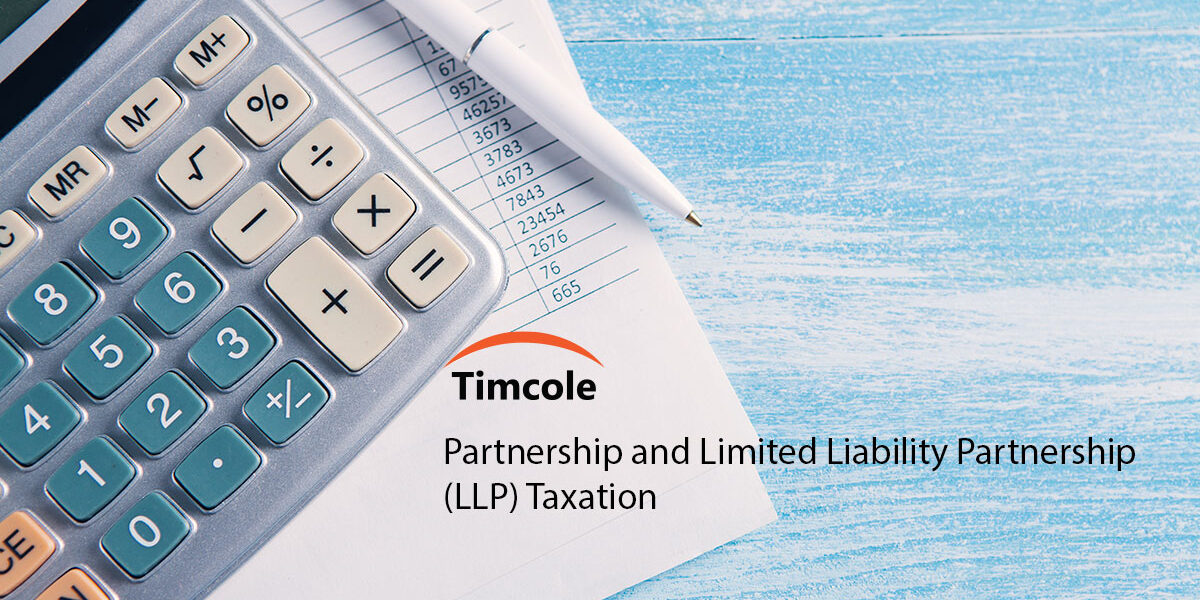Taxation of Partnership
A partnership can be defined as a legal relationship between 2 or more individuals who have agreed to carry out business with the purpose of making a profit together, and then sharing that same profit.
Since a partnership is not recognized as an entity in law, it is not obligated to pay income tax on the income that was earned by the partnership. Instead, each partner will be taxed on their share of the income that was earned from the partnership.
Although partnerships do not need to pay any tax in Singapore, they are still obligated to file an annual income tax return to show the income that they have earned and deductions that they have claimed for expenses that were incurred in the business.
Taxation of Limited Liability Partnership (LLP)
Limited Liability Partnership (LLP) is a business structure that allows a business to operate as a partnership while at the same time, giving the partners the status of separate legal persons.
A LLP is seen as a corporate body by law and it is formed by getting registered under the LLP Act.
💡 Read our guide to know the difference between each business structure.
Tax Liability of an LLP and LLP Partners
For income tax purpose, LLP is treated as a partnership and not as a separate legal entity. What this means is that a LLP will not be liable to any entity-level tax. Instead, each member will be taxed on their share of the income from the LLP.
If the partner is an individual, their share of the income will be taxed based on their personal income tax rate. If the partner is a company, their share of the income will be taxed based on the tax rate for companies.
🏢 Are you a company? Read our guide on Singapore corporate tax.
Deduction Restriction Rules
There is restriction in place when it comes to partners’ share of capital allowance and trade loss from the LLP. This restriction can be used against other sources of their income (relevant deduction) for a year of assessment, together with all of their relevant deductions that have been allowed in the past years of assessment (past relevant deduction).
Filing Procedure For LLP
The filing procedure for LLP is similar to the standard of a partnership in Singapore.
In order to apply the relevant deduction restriction, the precedent partner needs to report the capital contribution of the partners in their tax returns.
Contributed Capital
Contributed Capital is the sum of the 2 followings:
- The amount of capital that the partner has contributed to the LLP (excluding any loans by the partner to the LLP) and that has not been drawn out or received by the partner (whether it be through distribution, a loan, or other similar intention).
- The amount of profits or gains of the profession, business, vocation, or trade that was derived by the LLP from any past year of assessment to which the partner is entitled but has yet to receive.
Contributions in Kind
When it comes to contributions in kind that comes in the form of real property, share, security, or intellectual property (where the total value exceeds $500,000), the partner is obligated to submit an independent valuation report together with their income tax return.
📃 Timcole offers valuation services conducted by field professionals. Click here for price.
Reduction of Contributed Capital
If a partner of a LLP makes a withdrawal of the followings, the amount of capital that the partner has contributed will be reduced:
- The capital that the partner had previously contributed to the LLP.
- Any portion of the partner’s share of the profits or gains of the profession, business, vocation, or trade that has been derived by the LLP in respect of past years that the partner had not previously withdrawn.
If a reduction of contributed capital winds up resulting in the partner’s past relevant deduction exceeding the reduced amount of his/her contributed capital at the end of the basis period, the excess will be seen as the income that can be charged with tax for the current year of assessment.
Any amount of the loss can be carried forward into a subsequent year of assessment for offset against the partner’s future income from the LLP.
Benefits of a Company Instead of a Limited Liability Partnership (LLP)
Tracking Capital Amount & Tax Filing
A LLP is obligated to keep track of the amount of capital that was contributed by each partner.
When it comes to tax reporting, filing a partnership tax return Form P is essential, and note that each partner also needs to file their own personal tax return. However, tax compliance fees can be pretty high, especially when compared to company tax.
Also, the whole process gets even more complicated whenever a change occurs within the partnership. The reason for this is that some adjustments need to be made to unabsorbed losses and capital allowances.
On the other hand, the claim of unabsorbed losses and capital allowances is typically much more straightforward for a company. This is because neither unabsorbed losses nor capital allowances are restricted by contributed capital. This is because there are no requirements in place when it comes to tracking the amount of capital that was contributed by each director/shareholder.
Applying for Tax Resident Certificate
A LLP may also face additional issues when doing business overseas. For instance, obtaining a tax resident certificate is typically not the easiest thing to do for LLP.
IRAS will not be interested in issuing the tax resident status certification for a LLP that is required for the signing an Agreement for the Avoidance of Double Taxation between Singapore and any other country. IRAS may be more lenient in issuing the tax resident status certification for a partner who files a request for it. These things tend to get much more complicated when both a resident and a non-resident partner are involved in a LLP.
The act of obtaining a tax residency certificate for a company is as easy as filling up an application form.

As you can see, setting up a company rather than a Limited Liability Partnership (LLP) in Singapore can be more beneficial.
If you have already set up your partnership or LLP, Timcole can help you convert it to a Private Limited Company (Pte Ltd).








